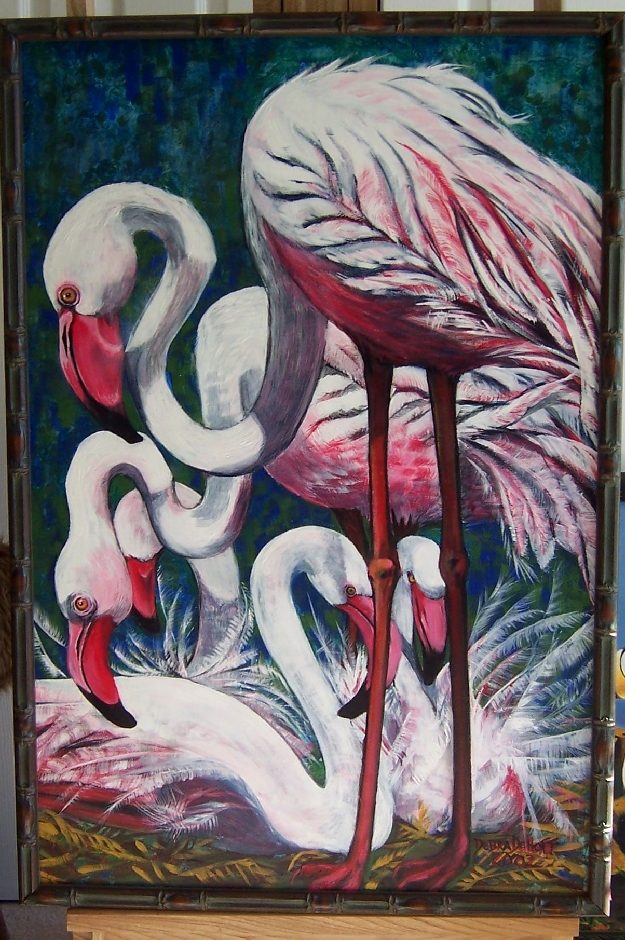Setting value to your illusion
Setting value or the overall mood of your vision is created by the artist using darkness and lightness. Some artist consider it the most important part of creating a great composition. We call this the overall value or the key.
Having constructed a great foundation for your vision, the final thing to consider is the value or the key.
Low key is the pictures that are overall dark in value and leave you with a feeling of sadness uneasiness and despair.
High key is picture that are overall light in value and leave you with a feeling of happiness, safety and lively.
Setting value and consistency
The value of your picture should be consistent with in the picture area. Your composition is strongest with the overall key the same. We are creating a believable illusion, trying to direct the viewer’s eye to the focal point. Taking time to think about the mood of the finished work. We do this by placing the gray and dark tones in areas that will support the key.
A rainy day drawn or painted to support a high key by making the sky bright with limited dark clouds and maybe a rainbow that formed from the sunlight direction. Leaving most of us the feeling that we are coming out of the stormy weather. A low key rainy day can be drawn or painted with grayer and darker clouds with no bright area leaving us with a feeling of despair.
A bull fight set in a high key shows the excitement of the fight with a wide range of contrasting values from the lightest to the darkest. A low key drawing or painting of the same fight can be done with a somber tone by controlling the contrast between tones.
Exploring setting value
Sometimes painting the same picture in two different keys you will see that they both work. It’s up to you to decide which fits your vision better. When exploring the picture area there are a few things to consider when setting the key. Using different tones of equal value or are too closely related will leave your picture with no center of interests.
Using in-between values of gray or color we are creating contrast between tones. To set the center of interest away from the background even though the other elements may stand out they are less important. Here are some things to consider when planning the picture area.
Basically setting value with patterns simply come down to this.
The light against dark, dark against light, dark and *halftone against light and finally light against dark halftone.
Sometimes there is a clear choice with patterns that are clear and sharp. The challenge comes in when you want to leave your viewers with a satisfied feeling.
You need to solve the pattern between the relationship between the elements and the key. You want all to support the center of interest. Trying out different value sketches to see what makes the most sense. This clears up the confusion and supports a believable illusion.
The paintings done in a high key are bright and light because that is where the artist chooses to focus his attention on. A painting can work in any key as long as the concept and the composition is strong.

Artist painting in the same key make it part of their style
The artist I think of is Thomas Kindade is a painter know for the high lights in his low key style of painting. Known as the painter of light. Kinkade said he was placing emphasis on the value of simple pleasures and that his intent was to communicate inspirational, life-affirming messages through his paintings.
I look at his work and it leaves me with a sense of calm because of how he uses the light as the center of interest in a low key painting. Like the light at the end of a tunnel.
Claude Monet is known a founder of French impressionism and know for his ambition of documenting the French countryside. It led him to adopt a method of painting the same scene many times in order to capture the changing of light and the passing of the seasons. His painting in a high key stand out because they are light and bright which accents the impressionistic style. Yet I think you could take any of his paintings set in a low key and they would be just as beautiful because the subject and composition are strong.
Setting value to color
Every color has multiple tones in dark and light shades and they will brighter depending on the color next to it. Keeping this in mind when you set your key. By getting your tones right your painting will come alive and pleasing to the eye.
Just as you created a gray scale every color becomes lighter when adding light and on the color scale. Take blue add white or a lighter color like yellow will brighten the color. Keep in mind the color next to it can change the value and brightness. Lighter colors are brighter next to darker colors. Darker colors push lighter colors towards you. Lighter colors push off darker colors.
All the elements will be setting value of your painting.